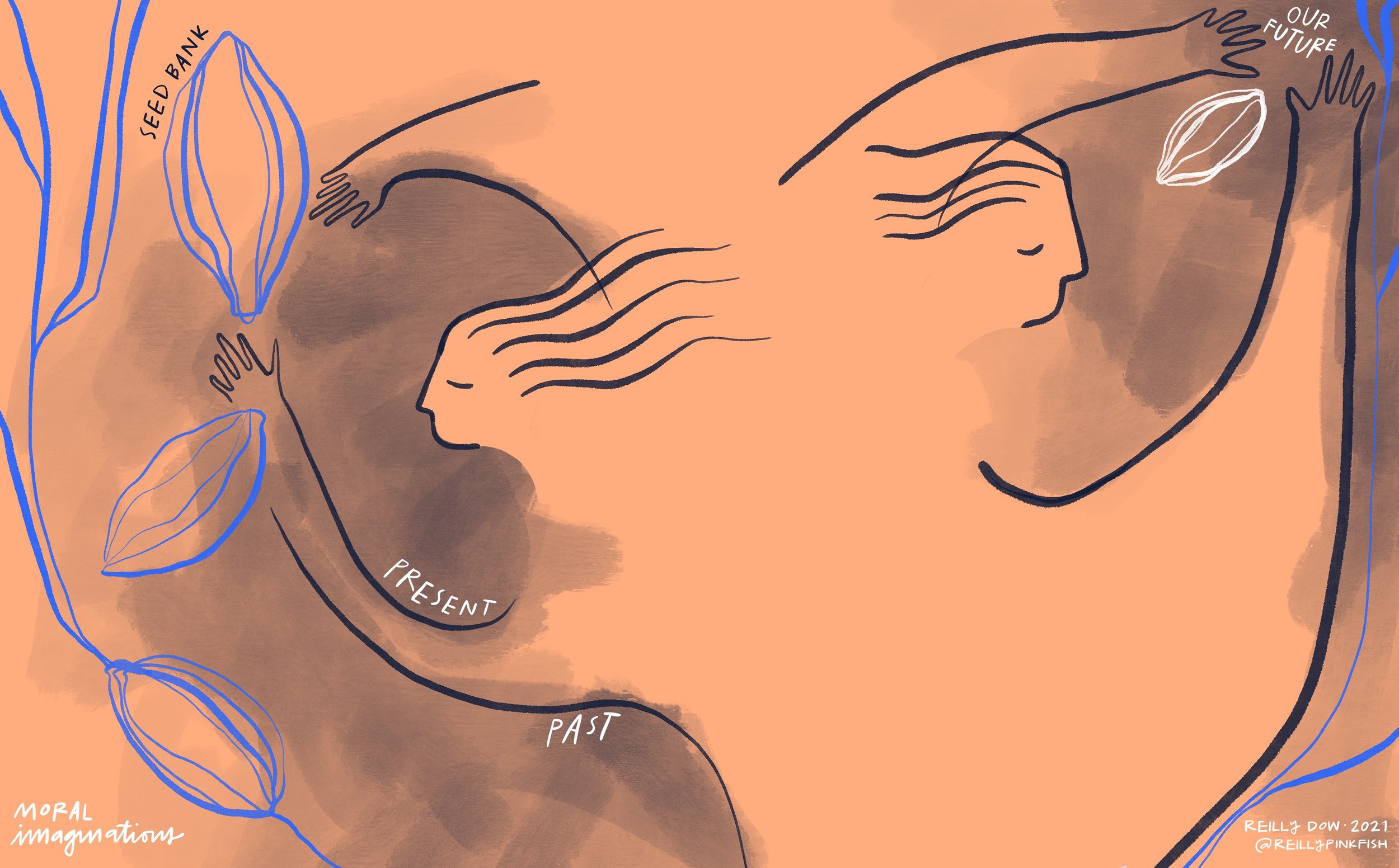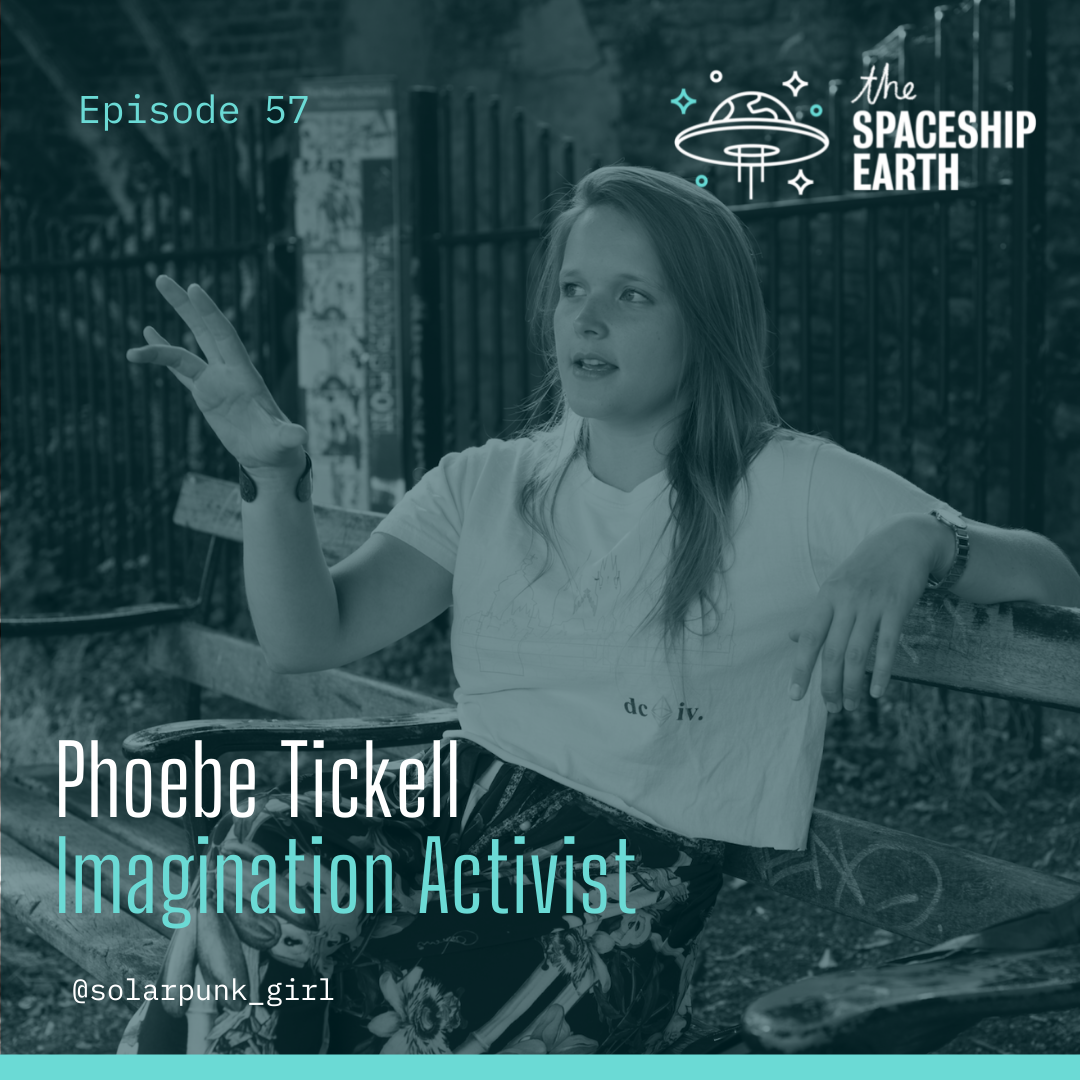
Imagination Activism
Being an Imagination Activist is an idea created by our founder Phoebe Tickell in March 2022. It is the basis of a movement, Imagination Activism, which invites people to exercise and stretch their imaginations in order to create new possibilities and new action.
The term is ‘Imagination Activist’ and ‘Imagination Activism’ is protected by a Creative Commons licence, CC BY-NC 4.0 DEED.
Presenting the idea of being an Imagination Activist to 4,000 people at the Inner Development Goals in Stockholm in April 2022.
More about the movement
Phoebe calls it “a new kind of activism powered by imagination and the vision and tools to make the world better for everyone”. It includes the need to imagine things differently, the need to expand who gets to imagine, and the need to go beyond the limits of traditional forms of activism that fight the old into imagining the new.
An imagination activist is someone who expands and works out their imagination muscle, to expand their ways of thinking, and their sense of what is possible and achievable. They expand their own imaginations and they also equip themselves with tools, questions and exercises to create ways to help others expand their imaginations too. In this way, they create pockets of the future by bringing new possibilities into the present, while also expanding the Overton Window of what seems possible too. One could refer to them as artists of the impossible.
In the current state of the world, and the endless news about natural disasters, mass violence and ecological destruction, it’s important not to look away from the seriousness of the crises we find ourselves in. To do anything else is to live in denial, but to get stuck in the doom is to live in despair. Imagination activists see the pain of the world and do not look away. But they believe a better world is possible, and they draw on the tools of creativity, inspiration and hope to resource their action to build that better world today.
Key Ideas of Imagination Activism:
Imagination is a muscle which atrophies without regular practice
We’re all born with the natural capacity to imagine, it’s just something that gets shut down, colonised and narrowed
This happens in three main ways:
The education system sets up a ‘winning’ or ‘failing’ mentality - success is measured by a single metric, it’s a binary and we begin to believe there is always a ‘right’ answer. Failure becomes crippling to imagination.
Workplaces continue the pattern with performance culture. People are afraid to look stupid, say the wrong thing, risk being demoted. This hems in creativity and authentic expression.
The conditions of 21st century life: stress, overwork, digital dependency (phone addiction), burnout compound the problem. People have very little ‘unplanned’ time and every moment must be productive and lead somewhere, and preferably have measurable output. Creativity is non-linear and needs space to thrive.
Cognitive science shows that there are two key circuits in the brain, one of them involved in linear, strategic and rational thinking, the other comes online in daydreaming, imagining and unbounded exploration. The first dampens down the second.
We have created a society and professional environment that favours and preferences the first circuit, without creating a protected space for the second. Imagination atrophies, and we are less able to come up with genuinely new ideas.
Some people refer to the period we are in as a ‘crisis of imagination’ - citing evidence such as the Torrance Creativity test which suggests that levels of creativity have been diminishing since the 1990s, previously steadily increasing since the 1960s.
A recent study corroborates with these findings, showing that papers and patents published since World War II have decreased in ‘disruptiveness’, even though investment into research and innovation has increased. Others claim the rate of innovation has been in decline since the Early Middle Ages.
We need three things to expand imagination capacity:
Dedicated time and space (and resources to support this)
Permission, which is often withheld in a performance culture, where people may fear being laughed at if they exercise imagination
Scaffolding through prompts and exercises which unlocks not just the brain but also feeling
Most problems are framed as resource problems - in fact the majority of problems are ‘imagination problems’. Vast sums of budget can be unlocked using imaginative thinking, by joining up dots and finding new solutions.
Find out more about Imagination Activism:
Our original blogpost on Imagination Activism, July 2022
The Imagination Activist, on the Spaceship Earth Podcast, March 2022
Imagination Activism to Create Systemic Shifts - Keynote at the IDG Summit, October 2023
Moral Courage and Imagination Activism at the Ma Earth podcast, June 2024
Imagination Activism: Exploring Radically Better Futures on Accidental Gods, June 2022
From What If to What Next: 69 - What if every institution ran Imagination Activist training? On Rob Hopkins’ Podcast, Dec 2022
Our 2 year project training Camden Council officers in our tools and skills of Imagination Activism: https://www.moralimaginations.com/camden-imagines
Imagination Activism is a concept licensed under a Creative Commons Non-Commercial (CC BY-NC 4.0) Licence. This requires that when using the framework, it is attributed (using TASL: Title, Author, Source, and License) and it isn't used for commercial purposes without our direct involvement. The reference is "Imagination Activism by Phoebe Tickell, CC BY-NC 4.0", and then to link to the Moral Imaginations website: www.moralimaginations.com.
If you’d like to understand more about this licence, and why we have chosen it, please get in touch, and we’d love to tell you about the ethos behind this approach. We feel strongly about stewarding this work in a way that is ethically aligned and maximises its sharing, while maintaining the lineage and rigour of the approach.
The reason we are choosing this licence is to build out a Moral Imagining Commons, which sits internationally and enables people to make iterations and adaptations to the Framework, always referring back to the community to contribute their modifications to the Commons. This approach sits with our values of peer-to-peer and commons building and allows us to build a community of facilitators and licensed practitioners around the work who can support each other, connect each other to opportunities, and adapt the work to new contexts. The method needs to be referenced, so that it can connect back to the Commons and allows us to build the methodology and ensure its integrity (with originators and lineage holders like Joanna Macy) as it develops. This approach is subversive against the capitalistic culture of individualistic gain, protecting value through care and rigour, rather than extraction.


